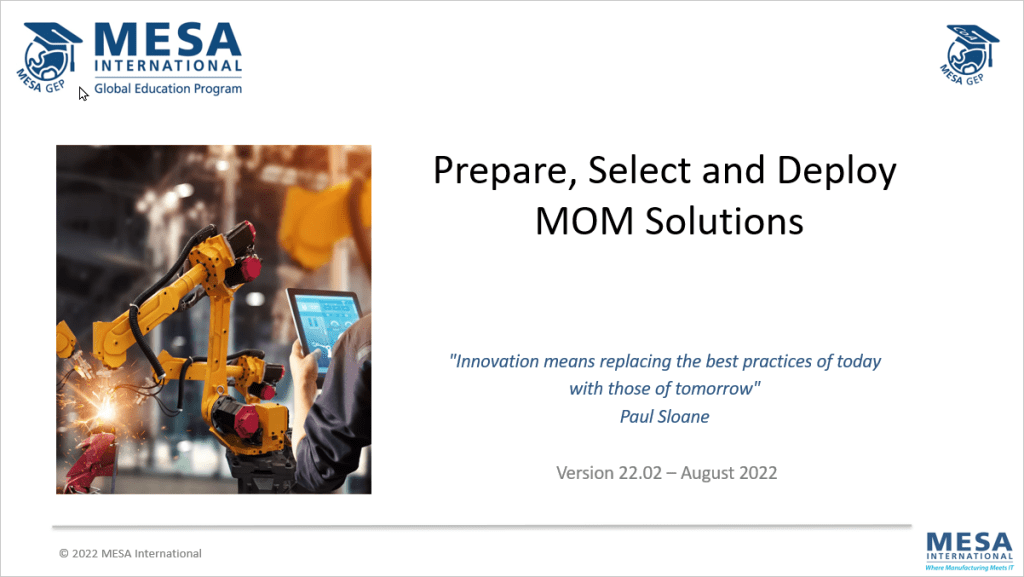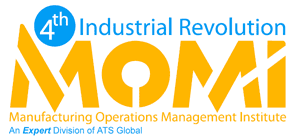Based on discussions with industry leaders and domain experts, the course explains how to construct a compelling business plan with a defendable ROI business justification for MOM solutions. Explained are how to quantify the form of operations process, its inefficiencies, its solution alternatives/compromises, benefits, and plant migration path. We will discuss explicit examples of successful justifications. The course arms learners with information needed to understand and address the competition (internal and external) for the scarce resources that exist for today’s manufacturers.
This module also presents the main elements of the methodology to successfully select a “sufficiently good” MOM solution that achieves your business and operational objectives.

This best practice methodology is published in MESA White Paper #11 and updated with experience from many MOM product selection initiatives. We explain the prerequisites for starting the selection process, which include various types of requirements and specifications, and communicating them to potential suppliers. The selected “sufficiently good” MOM solution has to enable to achieve the elements of your business case. include various types of requirements and specifications, and communicating them to potential suppliers. The selected “sufficiently good” MOM solution must achieve the elements of your business case.
The last part of this module is about the deployment of MOM solutions. This is where it all comes together. Projects need a framework or methodology. Next to the traditional project management methodologies PRINCE2 and PMBOK, we will discuss other options. You need more than a new MOM product; you need skilled implementers, too. Key is combining the best of both worlds by collaborating with suppliers and/or system integrators. Introducing new manufacturing software requires users to adopt a new way of working. This is intentional, if you want to improve your performance as a manufacturer. You need user acceptance to deliver the targeted benefits.

- Introduction
- Prepare: Justification and ROI Modeling
- Examples
- MOM Selection Methodology
- Create a Shortlist
- Final Evaluation and Ranking
- MOM Solutions Deployment
- Project Methodologies
- Prepare for Deployment Projects
- Importance of User Acceptance
- Conclusions and Wrap-up
